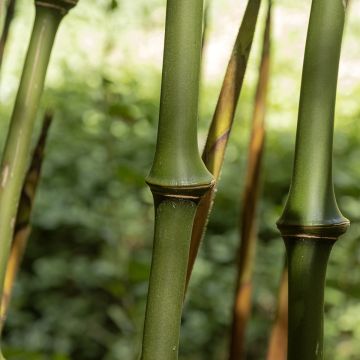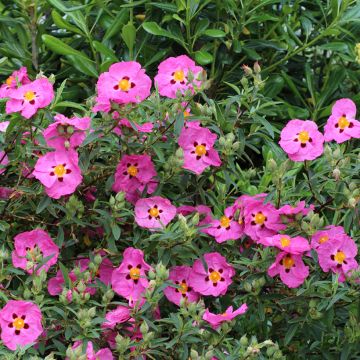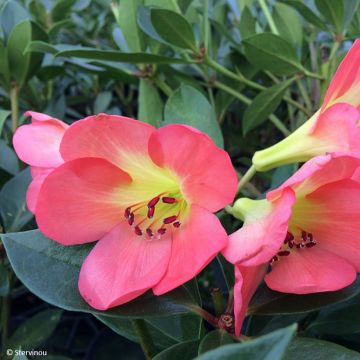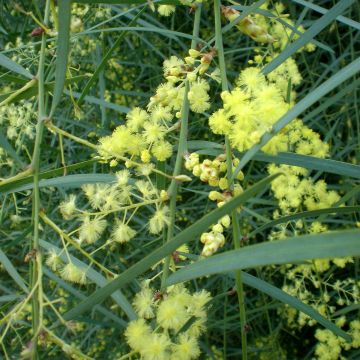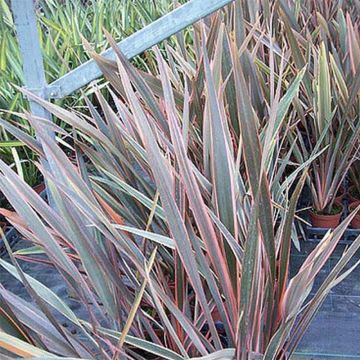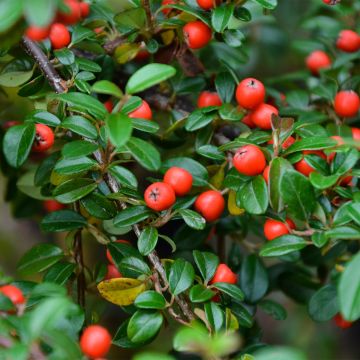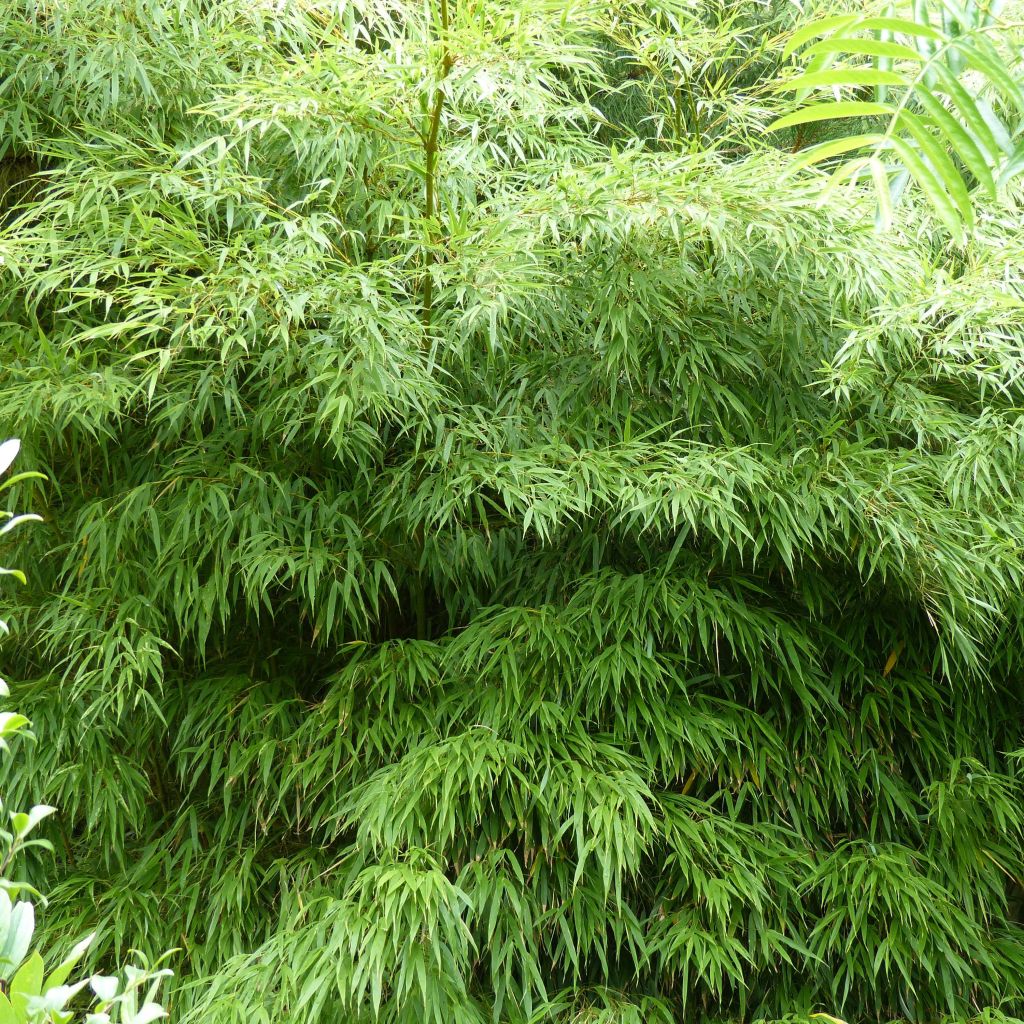

Chimonobambusa tumidissinoda Microphylla - Bambou moyen


Chimonobambusa tumidissinoda Microphylla - Bambou moyen
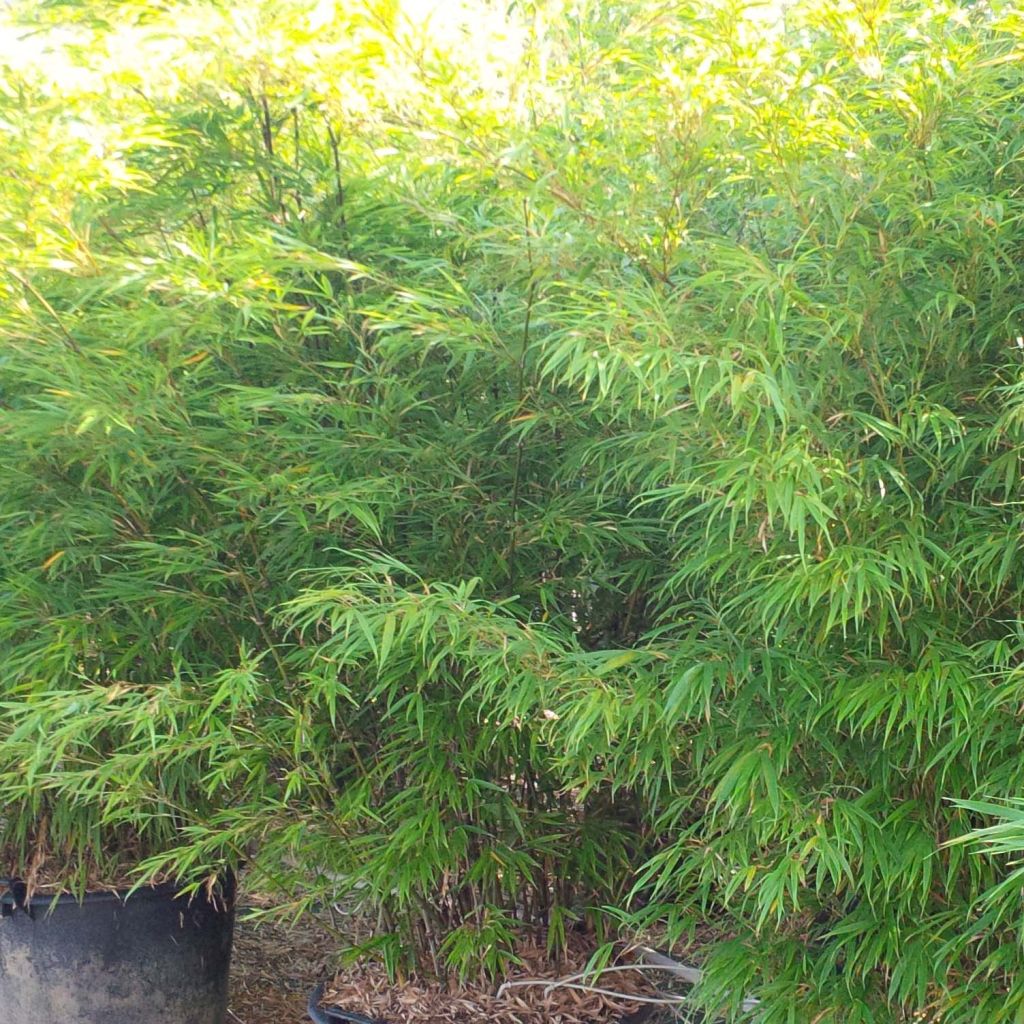

Chimonobambusa tumidissinoda Microphylla - Bambou moyen
Chimonobambusa tumidissinoda Microphylla
Chimonobambusa tumidissinoda Microphylla
Walking-stick Bamboo
Very beautiful bamboo, the foliage is particularly stunning in real life compared to the photos and compared to other bamboos of the genus phyllostachys. The tricky thing is that the leaves don't indicate when it's thirsty. If it's thirsty, a few days later they turn yellow and fall off, and that's it... Unlike most bamboos, which signal the problem by curling their leaves: be careful with watering during the first few years.
Etienne, 17/02/2023
Special offer!
Receive a €20 voucher for any order over €90 (excluding delivery costs, credit notes, and plastic-free options)!
1- Add your favorite plants to your cart.
2- Once you have reached €90, confirm your order (you can even choose the delivery date!).
3- As soon as your order is shipped, you will receive an email containing your voucher code, valid for 3 months (90 days).
Your voucher is unique and can only be used once, for any order with a minimum value of €20, excluding delivery costs.
Can be combined with other current offers, non-divisible and non-refundable.
Home or relay delivery (depending on size and destination)
Schedule delivery date,
and select date in basket
This plant carries a 24 months recovery warranty
More information
We guarantee the quality of our plants for a full growing cycle, and will replace at our expense any plant that fails to recover under normal climatic and planting conditions.

Would this plant suit my garden?
Set up your Plantfit profile →
Description
Chimonobambusa tumidissinoda 'Microphylla' is a medium to small-sized bamboo, very graphic. Its canes, a beautiful green with hints of pale yellow-olive, are adorned with curiously swollen and flattened nodes, and they bear small, thin and feathery foliage, arranged beautifully in layers. With a graceful, almost weeping habit, the plant looks wonderful in a grove. For example, place it in a large pot or container, and this collectible bamboo will surely arouse curiosity. Slightly spreading, decorative all year round, resistant to cold as well as heat, it thrives in partial shade, in cool and deep soil.
Chimonobambusa tumidissinoda 'Microphylla' (synonym Qiongzhuea tumidinoda) is native to valleys located in the Chinese provinces of Sichuan and Yunnan, near the borders of Myanmar and Vietnam. Introduced to England in 1987, it slowly spreads throughout Europe where it remains rarely cultivated. This 'Microphylla' form only differs from the 'Macrophylla' variety in the size of its leaves, which are much smaller and thinner. Perfectly suited to temperate climates, it tolerates temperatures as low as -15°C. Like all bamboos, it belongs to the family of Poaceae or grasses. This moderately growing bamboo exhibits a wide, open and particularly flexible habit. It has a trailing rhizome rootstock that slowly colonizes the soil around the stumps. Its culms (or canes) are a pale olive green, slightly tinged with yellow, with a diameter of 2 to 3cm (0.8 to 1.2in), reaching a height of 3 to 5m (9ft 10in to 16ft 5in). One of the characteristics of this bamboo lies in its large and flattened nodes, arranged at regular intervals along the culms. Their diameter often reaches twice that of the internodes. Its evergreen foliage, of great lightness, consists of short, very narrow leaves of a beautiful light green, slightly trailing.
Relatively easy to cultivate, hardy against cold as well as occasional droughts, this bamboo allows for the creation of highly poetic scenes, reminiscent of Japanese maples. It is perfectly suited for Zen, exotic or contemporary gardens. Avoid planting it in hot sun, in excessively dry soils, and in windy locations. It can be planted as a hedge, in isolated groups, but also in containers where it performs very well. It integrates quite easily into the garden, pairing well with trees such as the caramel tree, Japanese maples in all their forms, and certain weeping conifers. In a more shrub-like bed, it accompanies the sacred bamboo, spindle trees, or Loropetalum. It can also be combined with black bamboo and different varieties of Fargesia, for a highly successful tropical scene. With its unique design, Chimonobambusa tumidissinoda 'Microphylla' is the ideal bamboo to give a very exotic character to even the most modest decor!
In Asia, the culms of this bamboo are used to make umbrella and walking canes. In fact, Charlie Chaplin's famous cane was made from Chinobambusa tumidissinoda.
Report an error about the product description
Chimonobambusa tumidissinoda Microphylla in pictures
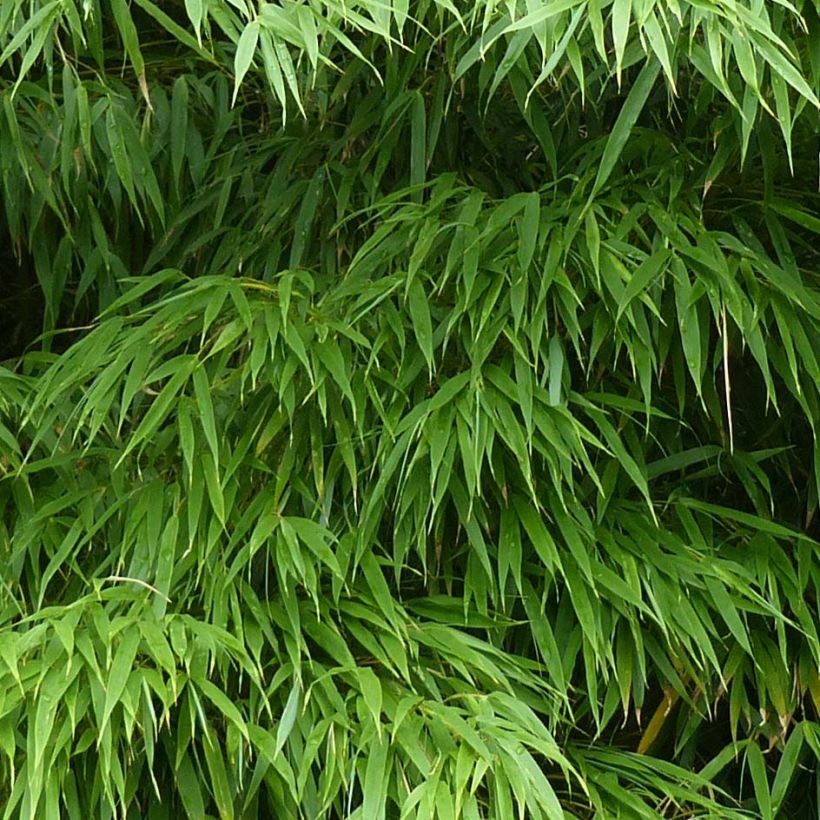

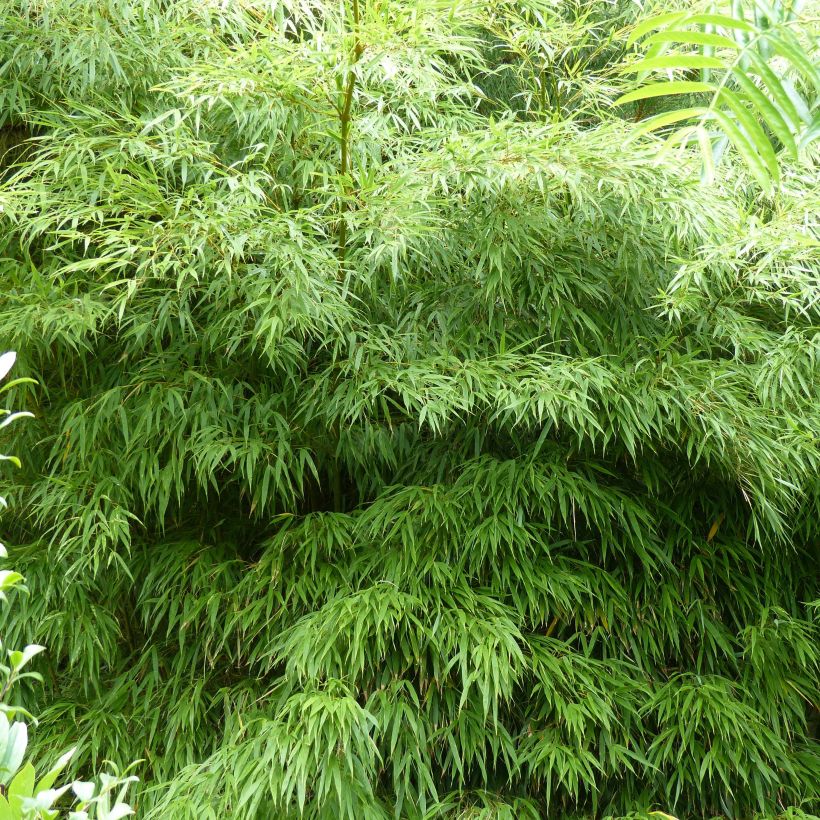

Plant habit
Foliage
Botanical data
Chimonobambusa
tumidissinoda
Microphylla
Poaceae
Walking-stick Bamboo
China
Other Chimonobambusa
View all →Planting and care
Grown in containers, bamboos can be planted at any time of the year, except during frost. However, the best planting period is late summer and autumn, when the soil is warm and rainfall is more frequent, or early spring. The planting distance depends on how you will use your bamboos: for a mass planting, allow a spacing of 1.8 to 2.2 metres (5 feet 11 inches to 7 feet 2 inches) between each plant. For a hedge, this distance is reduced to 1 to 1.4 metres (3 feet 4 inches to 4 feet 7 inches).
In general, bamboo prefers rich, deep, well-drained soil that remains moist, acidic or neutral. They can tolerate slightly alkaline soil.
Chimonobambusa is sensitive to scorching exposures, so plant it in partial shade, preferably in dappled sunlight.
During planting, make sure to loosen the soil and thoroughly moisten the root ball by soaking it. You can add well-decomposed compost and rake it into the surface. Watering should be done regularly for at least the first year in open ground, and continuously if your bamboos are grown in pots. The establishment period may seem a bit long at times, but don't panic!
For bamboos with running rhizomes, the installation of a rhizome barrier (thick and sturdy polypropylene film) is essential because these varieties, disregarding the concept of property limits, can quickly colonize large areas. The rhizome barrier should be buried vertically, leaving a height of 10cm (3.9in) exposed, which should be inclined at a 15 degree angle towards the plant.
In terms of maintenance, bamboo is not demanding: remember to weed around the base, at least during the initial period until its dead leaves, left on the ground, form a natural mulch. An application of nitrogen fertilizer (well-decomposed manure or liquid fertilizer) in spring and autumn can be beneficial.
Planting period
Intended location
Care
-
, onOrder confirmed
Reply from on Promesse de fleurs
Similar products
Haven't found what you were looking for?
Hardiness is the lowest winter temperature a plant can endure without suffering serious damage or even dying. However, hardiness is affected by location (a sheltered area, such as a patio), protection (winter cover) and soil type (hardiness is improved by well-drained soil).

Photo Sharing Terms & Conditions
In order to encourage gardeners to interact and share their experiences, Promesse de fleurs offers various media enabling content to be uploaded onto its Site - in particular via the ‘Photo sharing’ module.
The User agrees to refrain from:
- Posting any content that is illegal, prejudicial, insulting, racist, inciteful to hatred, revisionist, contrary to public decency, that infringes on privacy or on the privacy rights of third parties, in particular the publicity rights of persons and goods, intellectual property rights, or the right to privacy.
- Submitting content on behalf of a third party;
- Impersonate the identity of a third party and/or publish any personal information about a third party;
In general, the User undertakes to refrain from any unethical behaviour.
All Content (in particular text, comments, files, images, photos, videos, creative works, etc.), which may be subject to property or intellectual property rights, image or other private rights, shall remain the property of the User, subject to the limited rights granted by the terms of the licence granted by Promesse de fleurs as stated below. Users are at liberty to publish or not to publish such Content on the Site, notably via the ‘Photo Sharing’ facility, and accept that this Content shall be made public and freely accessible, notably on the Internet.
Users further acknowledge, undertake to have ,and guarantee that they hold all necessary rights and permissions to publish such material on the Site, in particular with regard to the legislation in force pertaining to any privacy, property, intellectual property, image, or contractual rights, or rights of any other nature. By publishing such Content on the Site, Users acknowledge accepting full liability as publishers of the Content within the meaning of the law, and grant Promesse de fleurs, free of charge, an inclusive, worldwide licence for the said Content for the entire duration of its publication, including all reproduction, representation, up/downloading, displaying, performing, transmission, and storage rights.
Users also grant permission for their name to be linked to the Content and accept that this link may not always be made available.
By engaging in posting material, Users consent to their Content becoming automatically accessible on the Internet, in particular on other sites and/or blogs and/or web pages of the Promesse de fleurs site, including in particular social pages and the Promesse de fleurs catalogue.
Users may secure the removal of entrusted content free of charge by issuing a simple request via our contact form.
The flowering period indicated on our website applies to countries and regions located in USDA zone 8 (France, the United Kingdom, Ireland, the Netherlands, etc.)
It will vary according to where you live:
- In zones 9 to 10 (Italy, Spain, Greece, etc.), flowering will occur about 2 to 4 weeks earlier.
- In zones 6 to 7 (Germany, Poland, Slovenia, and lower mountainous regions), flowering will be delayed by 2 to 3 weeks.
- In zone 5 (Central Europe, Scandinavia), blooming will be delayed by 3 to 5 weeks.
In temperate climates, pruning of spring-flowering shrubs (forsythia, spireas, etc.) should be done just after flowering.
Pruning of summer-flowering shrubs (Indian Lilac, Perovskia, etc.) can be done in winter or spring.
In cold regions as well as with frost-sensitive plants, avoid pruning too early when severe frosts may still occur.
The planting period indicated on our website applies to countries and regions located in USDA zone 8 (France, United Kingdom, Ireland, Netherlands).
It will vary according to where you live:
- In Mediterranean zones (Marseille, Madrid, Milan, etc.), autumn and winter are the best planting periods.
- In continental zones (Strasbourg, Munich, Vienna, etc.), delay planting by 2 to 3 weeks in spring and bring it forward by 2 to 4 weeks in autumn.
- In mountainous regions (the Alps, Pyrenees, Carpathians, etc.), it is best to plant in late spring (May-June) or late summer (August-September).
The harvesting period indicated on our website applies to countries and regions in USDA zone 8 (France, England, Ireland, the Netherlands).
In colder areas (Scandinavia, Poland, Austria...) fruit and vegetable harvests are likely to be delayed by 3-4 weeks.
In warmer areas (Italy, Spain, Greece, etc.), harvesting will probably take place earlier, depending on weather conditions.
The sowing periods indicated on our website apply to countries and regions within USDA Zone 8 (France, UK, Ireland, Netherlands).
In colder areas (Scandinavia, Poland, Austria...), delay any outdoor sowing by 3-4 weeks, or sow under glass.
In warmer climes (Italy, Spain, Greece, etc.), bring outdoor sowing forward by a few weeks.






























